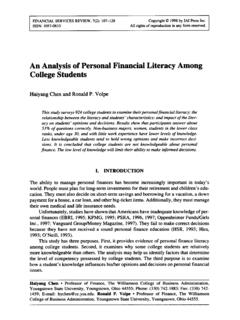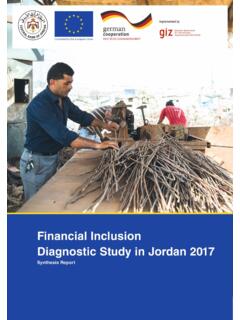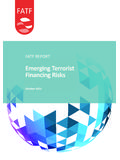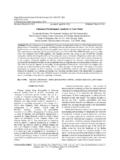Transcription of r maagemet urvey o maor nancial institutions Rethg …
1 Section titles Summary Methodology 2015 risk management survey of major financial institutions Rethinking risk Culture management Banks focus on non- financial Non-financials risks and accountability Appetite Governance Stress testing Basel III. Conclusion Contacts Contents Executive summary 3. Research methodology 12. and demographics Risk culture 14. Non- financial risks 26. Risk appetite 35. Risk governance 42. Internal stress testing 46. Impact of Basel III 52. Conclusion 60. Contacts 62. Executive summary R ethinking risk management is the sixth annual study of risk management practices conducted by EY in cooperation with the Institute of International Finance (IIF) since the financial crisis. A total of 51 firms across 29 countries participated in this year's study. The five previous surveys delivered a clear picture of the industry moving steadily year by year to enhance risk management systems and processes to meet regulatory and market demands for tightened controls and prevent a future crisis from occurring.
2 This year's survey sees further consolidation of those changes but also the start of a process to re-engineer some aspects of risk management, one requiring new approaches and tools. Executive summary Summary A consistent theme in this year's survey is the degree to which firms are rethinking their approach to managing non- financial risks and risk accountability. Recently uncovered conduct and compliance failures have resulted in huge financial and reputational costs Methodology to the industry, and nearly two-thirds of survey participants agree that lapses in internal oversight and controls are the main reasons for these losses. Study results point to several key initiatives under way to improve risk management and risk behavior: New treatment for non- financial risks. Firms are now looking at non- financial risks Culture in a more granular way by sub-risk types such as conduct, compliance, reputation, money laundering and systems. An increasing number are treating conduct risk Non-financials as a principal stand-alone risk type and devoting significant time and resources to redefining policies, procedures and metrics to manage and monitor it.
3 Forward-looking versus after-the-fact analysis. Over half of the participants are working to develop more forward-focused assessments and prevention rather than Appetite after-the-fact analysis of a risk failure, and many are enhancing scenario analysis and tools to better assess forward non- financial risk. This is akin to a financial -risk mindset, which aims to identify credit and market risks and anticipate their effects. Governance Stress testing To spur the change, a number of banks are moving the compliance function under the risk function. Increased accountability of businesses. The importance of assigning and monitoring accountability has emerged over the past year as a key factor in non- financial risk management. Ninety-four percent of this year's respondents now hold the front office desk heads and business-unit heads fully accountable for managing a wider view of risk, including non- financial risks, such as conduct and reputational risks, in their areas.
4 Basel III. New processes to manage conduct risk. Given the heightened regulatory, public and board attention to misconduct in the industry, conduct risk management is a Conclusion high priority. On a fundamental level, many reported work to identify and reduce intrinsic risks inherent in their current business models. These include exiting certain markets and types of products, changing incentives and adjusting revenue and sales targets. Products and customers are both areas of greater attention, and many firms Contacts have implemented new product development approval and oversight processes and improved customer-facing activities. Executive summary Summary It has become increasingly apparent that having a strong firmwide risk culture is one of the key components of successful risk management, and both regulators and boards are demanding significant enhancements to governance, structure and controls in an effort to improve risk behavior. As a result, there has been an intensified effort Methodology across the industry over the past several years to review and assess current processes and procedures and implement changes to proactively and effectively manage the culture.
5 Seventy-seven percent of survey respondents reported an increase in senior management attention to risk culture in the past 12 months, a considerable increase from the previous two years. And 75% report they are in the process of changing their culture. A key driver behind these changes is the effort to achieve alignment and Culture integration of all the elements that ultimately affect behavior, including risk appetite, accountability, performance management, compensation, hiring and training. In last year's study, we reported some significant changes under way around Non-financials risk governance. Many firms were in the process of adding new board and senior management committees to oversee and monitor ethics and conduct and were streamlining and integrating current committees to break down silos. This year, firms are buckling down to implement and refine the changes initiated last year. On other fronts, firms are still finding it difficult to translate the firmwide risk appetite strategy Appetite into the day-to-day planning and operations of their businesses, and the majority continue to work to improve stress testing approaches and enhance data and systems.
6 And finally, the changes implemented as a result of Basel III have been important for Governance many banks. While most of the firms in this year's study have completed, or are close to completing, their systems and processes to comply with the Basel III requirements, the impact of the mandated changes on strategy, cost structures and profitability is still reverberating throughout the industry. Rising costs and decreasing return on equity (ROE) are driving much of the change. Almost 80% of respondents report that investors Stress testing are not accepting the lower ROEs and are putting pressure on them to improve performance and increase returns, and many firms are continuing to adjust their business models in an effort to do so while addressing risk issues at the same time. Basel III. Conclusion Contacts Executive summary Summary Strengthening the risk culture continues to be top of mind Given the number of conduct failures across the industry and the intensified pressure from regulators, there has been a major industry-wide effort over the past few years to alter risk culture.
7 Firms are approaching this from at least three directions: further Methodology strengthening risk governance and, in particular, shifting accountability for risk into the front office and ensuring the front-office controls are in place and effective; clarifying the range and magnitude of acceptable risk using an embedded risk appetite statement and various forms of messaging and training; and more closely aligning incentives with risk objectives and establishing how breaches in rules will be viewed and handled. Culture However, much of this is still work in progress. Executives agree that the key ingredients for creating a strong risk culture must include direction and relentless communication from the top of the organization; a strong Non-financials risk appetite that is embedded into business strategy and planning; clearly defined roles, responsibilities and accountability; and strong consequences for misbehavior through performance management, compensation and disciplinary actions.
8 For many firms, making risk everyone's business, from the top ranks down to the front-line staff, represents a significant shift in mindset, policies, systems and processes and requires Appetite an ongoing, long-term commitment and investment. Governance Stress testing 75% of banks are making changes to their culture, and 81% say that cultural change is still very much a work in progress. Basel III. Only 44% say that individual behavior is significantly reflected in career progression, and only 42% believe that it is completely understood that negative Conclusion behavior will be penalized despite earnings performance. However, 94% report that severe breaches to the firm's risk policies do result in disciplinary actions. Contacts 46% say that messages not cascaded effectively throughout the organization are a major cause of the breakdown in risk culture. Executive summary Summary Non- financial risks, particularly conduct risk, are another top concern Almost all banks have increased the focus on non- financial risk, and many are now looking at it in a more granular way by sub-risk types such as conduct, compliance, Methodology reputation, money laundering and systems.
9 Losses from non- financial risks have been high for many firms, particularly global systemically important financial institutions (G-SIFIs), reflecting the size of fines and remediation costs, and the majority of this year's study participants cite lapses in oversight and controls as a key internal factor that has contributed to these loss events. As a result, most banks are enhancing operational controls and processes to identify control weaknesses. In many firms, this is Culture an intensification of existing processes. But some banks are also developing new tools and techniques to understand and track the intrinsic risks more effectively. Firms are increasingly focusing on forward-looking risk assessments and prevention versus after- the-fact analysis of a risk failure, and many are enhancing scenario processes and tools aimed at more effective assessment of forward risk. Non-financials Given the heightened regulatory and public attention to misconduct in the industry, conduct risk management is a high priority.
10 Many participants reported activities to identify and reduce intrinsic risks inherent in their current business models, including dropping products and exiting markets, changing incentives and adjusting revenue Appetite and sales targets. Additionally, many have implemented new product development approval and oversight processes and improved customer-facing activities. Many agree that an essential part of the solution will be a fundamental shift to the front office of accountability for all risks, including non- financial ones. In many banks, the business lines are notionally responsible for all risks, but there are no structures to enable Governance them to exercise that responsibility, and generally, de facto accountability sits in the control functions. 89% report increased board and senior management attention to conduct risk. Stress testing 64% cite weak oversight and controls as main causes of loss events. 94% say the front office and business heads are responsible for day-to-day management of risks.















